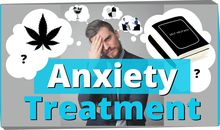Don't be SAD this winter!
Some of us may be familiar with seasonal affective disorder (SAD) and what it is. But for those of us who don’t we wanted to share a little bit of our knowledge with you, especially as it will be Winter before we know it! Which, as you learn more about SAD you’ll understand why the seasons are so important.
So what is SAD?
Well SAD is actually a type of depression related to changes in seasons; it usually begins and ends at about the same time every year. For most people it begins during autumn, this is when you are most likely to notice your symptoms, it then continues into the winter months sapping your energy and suppressing your mood. However one can’t rule out SAD causing depression in the spring or early summer, albeit much less common.
Bearing that in mind, there are steps you can take to keep your mood and motivation steady throughout the year, rather than brushing off that yearly feeling as “winter blues”. But, before we do that, how do we know that what we are experiencing is SAD?

SAD can occur in many different people - however it is more common in women, people who live far from the equator where winter daylight hours are shorter, people aged between 15 and 55 (the risk of getting SAD for the first time actually decreases as you age) and people who have a close relative with SAD.
With those in mind, what symptoms might suggest you have SAD:
-
You will likely feel sad, grumpy, moody and/or anxious without a negative situation or thoughts to induce these
-
You may lose interest in your usual activities that you find pleasurable
-
You could find yourself eating more and craving starchy carbohydrates such as bread and pasta
-
You may find yourself gaining weight
-
You will likely find yourself sleeping longer than usual but still feel unusually tired
-
And finally, your ability to concentrate may be impacted
As we’ve mentioned above, these symptoms tend to come and go around the same time each year, so if you’ve found yourself in this cycle for a while but have never had an explanation, it may be that you’re experiencing SAD. Despite this, the causes of SAD are still relatively unknown; most health experts believe it’s caused by a lack of sunlight. Given the symptoms of SAD are similar to other types of depression it’s also quite hard to diagnose, therefore it’s always a good idea to reach out to a mental health professional if you find yourself experiencing any of the above.
So how can we treat SAD?
Well there are a number of ways, firstly seeing a Psychologist can help, Cognitive-behavioural therapy and interpersonal therapy are empirically proven to help manage the symptoms of SAD and reduce/prevent future episodes – and naturally we also think this is the best way. Another form of therapy which appears to be the most common type of therapy is light therapy. Light therapy basically entails resetting your biological clock with increased exposure to fluorescent light for a certain amount of time each day at certain points of the day. Most users of light therapy may notice an improvement in mood within about a week or so, however it needs to be stuck to on a daily basis until the seasons change, otherwise there’s a risk those depressive symptoms will reappear. Another potential option is anti-depressants. Although you will need to weigh up the short term benefits and the potential long term side effects, which can sometimes outweigh the need to use them. All of the above require help from trained professionals, yet there are a number of things we can do on our own which can help. Regular exercise is one of the best things you can do for yourself; getting more sunlight may help too, so why not combine both of them and get outside and exercise in the sunshine – in New Zealand we have no shortage of outdoor space to do so. It’s also a good idea to exercise earlier in the day, this can increase our energy levels and also mood for the remainder of the day.
Thanks for reading this month, and remember if you ever find yourself experiencing any symptoms which are outside your range of normal; we have a group of experienced psychologists that have the tools to help you on your journey to wellness.










